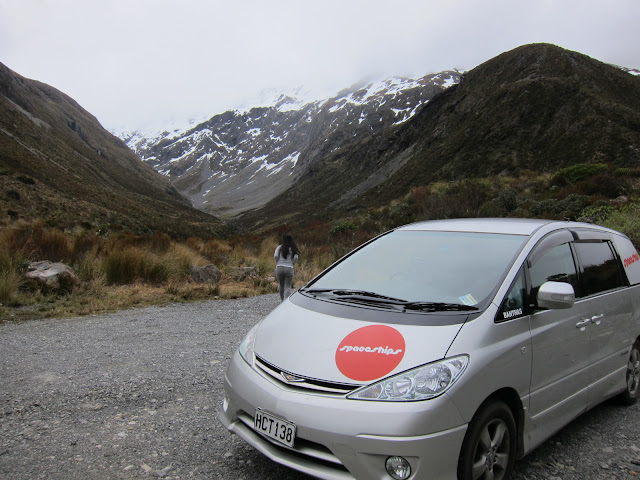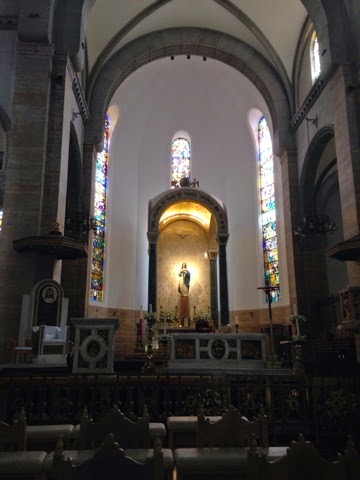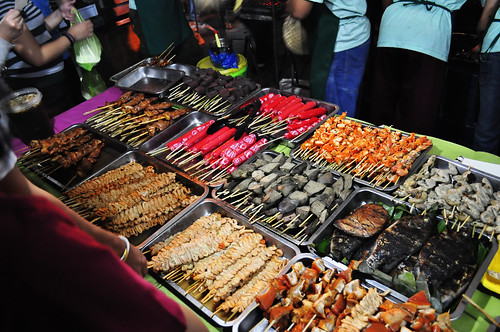There are many types of campervans out there in the market. There's really elaborate ones which are huge, comes with a spacious shower, kitchenette and sitting area. There's also really simple ones, very much like the one we rented, which is basically just a simple car with a bed at the back.
 |
| Types of Camervans |
Despite having a license and driven a car with manual transmission, we were not experienced driving a manual car on steep mountainous slopes. We live in a city where everything is almost flat and we drive an Automatic car. We wanted something which will be easy to drive while navigating foreign land.
 |
| Camper with side awning. |
Besides, there were only two of us, and we felt Spaceship has sufficient space for us!
This being said, we were unable to freedom camp because we do not have a toilet attached to our camper.
Electricity
If you decide to get the luxurious camper, you will not have a problem charging your electronics. There are multiple electrical outlets for you to plug in and use! However, if like us, you decide on getting a simpler camper, there will be no electrical outlet.
 |
| Electrical outlets |
We rented an external power cord (240 volt mains plug) for NZ$60 for the duration of our trip. Park in a powered campsite and you're good to go! As we had quite a few electronics, we stopped at the nearest DIY store and bought an extension cord so we could charge four electronics at once.
I didn't take a photo of our electrical cord so I grabbed this from online. *Sorry* As you can see, the power cord is the orange wire.
Cooking
The Spaceship rental comes with a portable stove, gas canister, pots and a kettle. As we had to park in a Camper Park every night, we had the luxury of a proper and clean toilet as well as well equipped kitchens to cook breakfasts and dinners. G insisted on getting an extra gas canisters as he was afraid that we'd run out of gas to cook our food eventually. We never used the second gas canister and barely finished the first one.
 |
| Cooking our dinner |
Also, we saved a lot on cooking our breakfasts and dinners! We grocery shopped about every two days, or if we felt like we were pigs and finished all the food the night before. We bought meat, fish, vegetables, lots of perishables! Don't be afraid that you can't find a supermarket. There are at least a well stocked one in every city!
Travel time
Because we basically lived in our car, our travel time is flexible. We could take a break anytime we were tired. We also didn't go through the hassle of packing a small bag every night, if we were to rent a normal car and stay in motels. The car was our home and it was so fun!
Looking for Campsites
If you get a camper without a toilet, you're not allowed to freedom camp. Obviously, there will be no place for you to shower and do your business. Such acts in public are highly frowned upon by locals and even the police!
 |
| Campers of all shapes and sized |
Also, at the rental office, you will be able to pick up a guide book on the various campsites around the country where you can park for the night. It will include the location, address, phone numbers and prices. On occasions, we were undecided on which campsite to choose from, we just drove right up to the campsite, checked it out and just choose our favourite!























